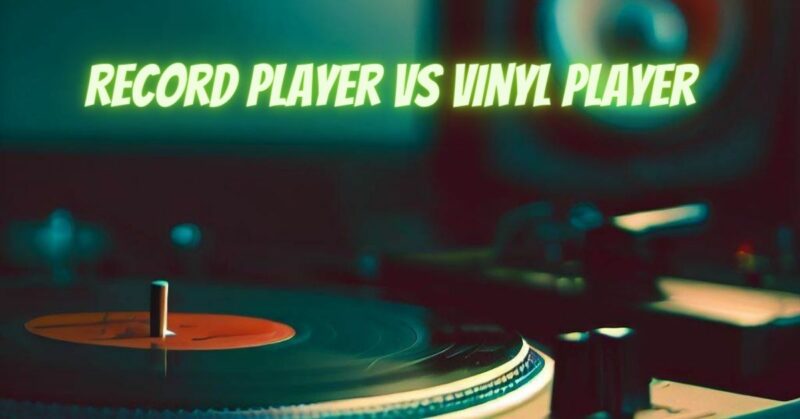When diving into the world of analog music, you may encounter terms like “record player” and “vinyl player” used interchangeably. While they both refer to devices that play vinyl records, there are subtle differences between the two. In this article, we unravel the terminology and explore the features that distinguish a record player from a vinyl player, helping you understand the nuances and make an informed choice for your analog listening pleasure.
Record Player: A Classic Term with a Modern Twist
The term “record player” has a long history, dating back to the early days of vinyl records. Traditionally, a record player referred to a device that played vinyl records using a turntable, tonearm, and needle (stylus). It would often include built-in amplification and speakers, allowing users to play records without the need for additional components.
In recent times, the term “record player” has evolved to encompass modern versions that incorporate both traditional analog features and modern technology. Modern record players may still have built-in speakers and amplification, but they often come with additional features like Bluetooth connectivity, USB output for digitization, and compatibility with digital music formats. These modern record players cater to a wide range of users, including those seeking a blend of vintage charm and contemporary convenience.
Vinyl Player: A Term for Modern Technology
The term “vinyl player” is a more recent addition to the analog audio lexicon. It emerged alongside the resurgence of vinyl records and the renewed interest in analog sound. A vinyl player typically refers to a turntable without built-in speakers or amplification. It is designed to be connected to an external audio system, such as powered speakers or a stereo receiver, to produce sound.
Vinyl players are often favored by audiophiles who seek the highest level of sound fidelity and customization. By allowing users to choose their preferred speakers, amplifiers, and phono preamps, vinyl players offer greater flexibility and potential for optimizing sound quality.
Key Features and Considerations
- Built-in Speakers: Record players usually come with built-in speakers, while vinyl players require external speakers for sound output. If you prefer a self-contained setup without the need for additional components, a record player might be more suitable.
- Customization: Vinyl players offer more customization options, allowing users to select and upgrade individual components to suit their preferences. This is advantageous for audiophiles seeking precise control over sound quality.
- Convenience: Record players, especially modern versions, offer user-friendly features like Bluetooth connectivity, making it easier to stream music wirelessly from various devices. If convenience is a top priority, a record player might be a better choice.
- Sound Quality: While both record players and vinyl players can deliver excellent sound quality, audiophiles may lean toward vinyl players for the potential to achieve higher fidelity through specialized components and connections.
In summary, the difference between a record player and a vinyl player lies in the built-in features and connectivity options. A record player typically includes speakers and amplification, providing an all-in-one solution for vinyl playback, often with additional modern features. On the other hand, a vinyl player focuses on providing a high-quality turntable without built-in speakers, allowing for greater customization and integration with external audio systems.
Your choice between a record player and a vinyl player depends on your listening preferences, desired features, and audio setup. Whichever option you select, embracing analog music through vinyl playback promises a captivating and immersive experience that connects you with the timeless allure of music on vinyl records.


